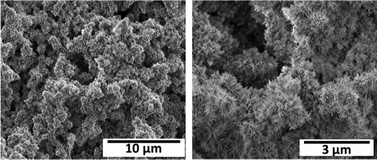Human osteoblast-like cells response to pulsed electrodeposited calcium phosphate coatings
Abstract
Calcium-deficient hydroxyapatite (Ca-def HAP) coatings are synthesized by pulsed electrodeposition on titanium alloy (Ti6Al4V) substrates. Physico-chemical characterizations of the coating are carried out using Scanning Electron Microscopy (SEM) associated with Energy Dispersive X-ray Spectroscopy (EDXS) for X-ray microanalysis, and Scanning-Transmission Electron Microscopy (STEM) and X-Ray Diffraction (XRD) for structural characterization. Moreover, the biocompatibility properties of the synthesized biomaterial are studied by observing the human osteoblast-like cells’ (MG-63) response, which is investigated using a proliferation study carried out with an MTS test, and a cellular morphology study performed by SEM. The analysis of gene expression is carried out using a Reverse Transcriptase-Polymerase Chain Reaction (RT-PCR). The results indicate that the pulsed electrodeposited Ca-def HAP coating doesn't produce any cytotoxic effect and enhances the gene expression of alkaline phosphatase (ALP) and osteocalcin (OC) which are the two main markers of osteoblast differentiation and bone neoformation.

- This article is part of the themed collection: Bioactive surfaces for hard tissue regeneration

 Please wait while we load your content...
Please wait while we load your content...